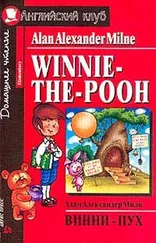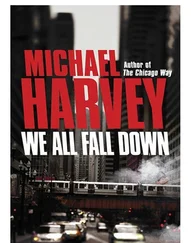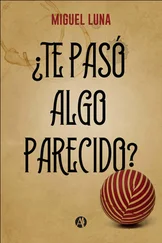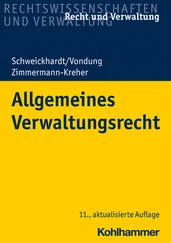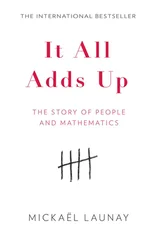Then, suddenly, Uruk emerges.
The town of Uruk was a human anthill, which lit up the whole of the Near East with its prestige and power. It was built mainly of mud bricks, and its orangey hues extended over more than one hundred hectares, so that the new visitor could stray for hours in its crowded streets. At the heart of the town, several monumental temples had been constructed, dedicated to An, the father of all the gods, and above all to Inanna, the Lady of the Heavens. It was for her that the Eanna Temple was built, its largest building 80 metres long by 30 metres wide, and hugely impressive to the many travellers who were drawn here.
Summer was coming, and as in every year at this time, the whole town was beginning to bustle with a particular activity. Soon the flocks of sheep would leave for the northern pasturelands, returning only at the end of the hot season. For several months, it would be the job of the shepherds to manage their animals, to keep them fed and watered, and to return them safe and sound to their owners. The Eanna Temple itself owned several flocks, the largest numbering several tens of thousands of animals. The convoys were so impressive that some were escorted by soldiers to protect them from the dangers of the journey. However, for the owners it was out of the question to let their sheep go without a few precautions. As for the shepherds, the contract was clear: as many animals must return as had set out. There was no margin for losing part of the herd or for clandestine trading.
This then led to a problem: how do you compare the size of the flock that leaves with the size of the one that returns?
In response to this, a system of clay tokens had already been developed several centuries earlier. There were several types of token, each representing one or more objects or animals according to its shape and the patterns traced on it. For a sheep, there was a simple disc marked with a cross. At the time of leaving, a number of tokens corresponding to the size of the flock were placed in a receptacle. On return, the owners had only to compare the flock with the contents of the receptacle to check that no animal was missing. Much later on, these tokens were given the Latin name of calculi , ‘small stones’, from which the term calculus was derived.
This method was practical, but it had a disadvantage. Who looked after the tokens? For suspicion cuts both ways, and the shepherds were in turn worried that unscrupulous owners might add extra tokens to the urn during their absence. Then they could claim compensation for non-existent sheep.
After much racking of brains, a solution was found. The tokens were to be kept securely in a sealed hollow clay sphere or envelope. At the time it was sealed, both parties were to leave their signatures on the surface of the sphere to certify its authenticity. It was then impossible to modify the number of tokens without breaking the sphere. The shepherds could leave without worrying.
But then, once again, it was the owners who found drawbacks in this method. For their business requirements, they needed to know the number of animals in their flocks at any time. How could this be achieved? Could the number of sheep be committed to memory? This was not straightforward, since the Sumerian language did not yet have words to denote such large numbers. Could you have an unsealed duplicate of all the tokens contained in all the envelopes? This was not very practical.
At last a solution was found. A reed stem was cut and used to trace out on the surface of each sphere a representation of the tokens it contained. That made it possible to reference the contents of the envelope at will without having to break open the sphere.
This method now seemed to suit everyone. It was widely used, not only to count sheep, but also to set a seal on all kinds of agreements. Cereals such as barley or wheat, wool and textiles, metal, jewels, precious stones, oil and pottery also had their tokens. Even taxes were controlled by tokens. In short, at the end of the fifth millennium, in Uruk, any contract in due and proper form had to be sealed by a hollow-sphere envelope with its clay tokens.
All this worked wonderfully well, but then one day a new idea emerged, so brilliant and so simple that one wonders why no one had thought of it before. Since the number of animals was inscribed on the surface of the sphere, what was the point of continuing to put the tokens inside it? And what was the point of continuing to make spheres? You could simply draw a representation of the tokens on an arbitrary piece of clay – for example, on a flat tablet.
This came to be called writing.
I’m back in the Louvre. The collections of the department of Near Eastern Antiquities bear witness to this story. The first thing that strikes me when I see these sphere–envelopes is their size. These clay spheres that the Sumerians created simply by turning them around their thumbs are scarcely any larger than ping-pong balls. As for the tokens, they are no bigger than a centimetre.
Stepping further into the museum brings us to the first tablets. Their numbers grow and they quickly come to fill whole display slots. Over time, the writing became more precise and took on its cuneiform appearance, comprising small notched wedges in the shape of a nail, with a stem and a head. Following the disappearance of the first Mesopotamian civilizations at the beginning of the modern era, most of these pieces had lain quietly for centuries beneath the ruins of those deserted towns before they were unearthed by European archaeologists from the seventeenth century onwards. They were only gradually deciphered during the nineteenth century.
These tablets are not very large either. Some of them are the size of simple visiting cards, but covered with hundreds of tiny signs which are crammed together one above the other. Mesopotamian scribes did not waste the slightest portion of the clay when they wrote. The museum’s explanation cards placed alongside these pieces enable me to interpret these mysterious symbols. They concern livestock, jewels or cereals.
Next to me, some tourists are taking photos with their tablets – this is an amusing nod to the carousel of history where writing appears on so many different media, from clay to paper, by way of marble, wax, papyrus and parchment, and which, in a final jest, has endowed electronic tablets with the shape of their earthenware ancestors. The face-to-face encounter of these two objects has something particularly touching about it. For all we know, in five thousand years’ time these two tablets may find themselves next to each other again, but on the same side of the glass.
Time has passed. We are now at the start of the third millennium BC, and another step has been taken: numbers have been freed from the objects that they count. Previously, in the case of sphere–envelopes and the very first tablets, the counting symbols depended on the objects in question. A sheep is not a cow, so the symbol for counting a sheep was not the same as the one for counting a cow. Every object that could be counted had its own symbols, just as it had had its own tokens.
But all that was over and done. Numbers had acquired their own symbols. In other words, eight sheep were no longer counted using eight symbols each denoting a sheep, but instead the figure eight was written down followed by the symbol for a sheep. And to count eight cows, you simply had to replace the symbol for a sheep by that for a cow. The number itself stayed the same.
This stage in the history of thought was absolutely fundamental. If I had to assign an actual date to the birth of mathematics, I would be sure to choose this moment: the moment when numbers came into existence in their own right, when numbers became detached from reality to observe it from a greater height. Everything before that had simply amounted to a gestation period. Bifaces, friezes, tokens – all these amount to preludes in the scheme that led towards the birth of numbers.
Читать дальше

